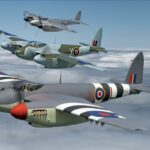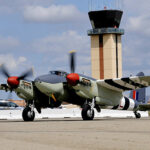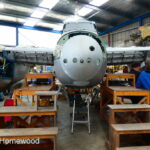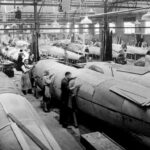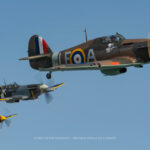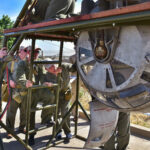By Nigel Hitchman and Staff Writers
On Monday, March 18th, 2024 at Ardmore Aerodrome, New Zealand, the fourth de Havilland Mosquito rebuilt by Avspecs Ltd., NZ2308/ZK-PWL, took to the air at 15:24 hours (local) for a brief 13 minute flight. It was flown by well-known warbird personality Steve Hinton, with Warren Denholm of Avspecs in the second seat. More test flights will follow on the 19th, and the aircraft is scheduled to be a major attraction at this Easter’s Warbirds Over Wanaka airshow — tickets are still available on Friday and Sunday.
On the morning of March 18th, the crew undertook a taxi test and engine runup, followed by a thorough check-over. The first flight, after lunch, comprised several circuits above the airfield followed by a textbook, smooth landing on runway 21 with a blustery 15-knot wind (mostly down the runway) under the broken cloud. The aircraft was then returned to the hangar for some tweaking followed by more flying intended for the next day.
This Mosquito is an Australian-built example that was sold to New Zealand and had logged over 475 hours when retired from service. It is currently painted in a version of its postwar 75 Squadron Royal New Zealand Air Force (RNZAF) silver scheme and codes, with the addition of wartime ‘D-Day’ stripes.
It is this aircraft that inspired this modern-day New Zealand Mosquito ‘production line’. In the late 1980s, when Glyn Powell was developing the new Mosquito mold process to reconstruct the wooden airframes of the type, Glyn selected it to be ‘his own’ Mosquito, but sadly Glyn passed away in 2019, though not before getting a Mosquito flight in another restored example. (Glyn’s plan to have this Australian-built aircraft to pay a flying visit to Bankstown, NSW, where it was built is no longer part of the publicly available plans.) The latter restoration of NZ2308 was completed by Avspecs and the Mosquito Aircraft Restoration team, for U.S. clients Rod Lewis and Charles Somers.
NZ2308’s History
This Mosquito was built by de Havilland Australia at Bankstown, Sydney, Australia, for the Royal Australian Air Force (RAAF). Originally planned to become an FB.40 fighter-bomber version (essentially the Australian-built equivalent of the very successful FB.VI) it was given the RAAF serial number A52-20. However, the decision was made to convert a batch of partly constructed FB.40s to dual control trainer status, and this aircraft was converted to a Mosquito T.43 while still on the production line. At that point, it was renumbered with a new serial, A52-1054.
The aircraft was allocated to No. 3 Aircraft Depot, RAAF Amberley, in Queensland on August 19th, 1946. Two months later it moved to RAAF Archerfield with the same unit on October 18th and was placed in storage, due to the war’s end and the sudden lack of need for these machines.
The RNZAF decided to purchase a small batch of dual-control Mosquitos to help convert crews onto the FB.VI fighter bombers that were to be ferried from Britain. As Australia had dual control Mosquitoes surplus to their requirements, the New Zealand government made a deal to purchase four T.43 models from Australia, and 15 Mosquito T.IIIs (from the UK) as well.
A52-1054 was one of those sold to New Zealand, at an individual cost of £3000, and was eventually ferried across the Tasman to RNZAF Base Ohakea, where it was brought on charge with the RNZAF on June 25th, 1947. The new RNZAF serial number NZ2308 was given to this Mossie.
It was allocated to 75 Squadron RNZAF and was marked with the code letters YC-Z. This turned out to be the only squadron of the postwar RNZAF to operate Mosquitoes when a policy change meant that the other two planned squadrons were never formed. The aircraft served with the squadron until the early 1950s when the unit converted to de Havilland Vampires.
After being sold to what proved to be an abortive project to use surplus Mosquito engines to blow air to protect fruit crops, the remains of NZ2308 ended up on a farm at Riwaka, north of Motueka, visible from the road. In the 1960s the airframe was recovered by volunteers from the Museum of Transport and Technology (MOTAT) who were also restoring another recovered Mosquito, NZ2305. [More details of the aircraft’s history can be found in Dave Homewood’s report on the restoration.]
Eventually, the remains of NZ2308 passed from MOTAT to Owyn Fenner, who worked at Gulf Aeronautics, Ardmore, and he came up with the idea of forming a syndicate to rebuild the airplane to fly again. He approached the NZ Warbirds Association, and a group was formed.
One of those syndicate members was Glyn Powell, who would eventually collect all the necessary drawings from around the world to build the fuselage molds from scratch and to rebuild the Mosquito, and continue with the idea after the syndicate dissolved. He also collected parts and other wrecks, and with a couple of colleagues, commenced the project which, with Avspecs (and others’) collaboration has resulted in this remarkable ‘production line’ of four fliers and one static rebuild – so far.
Avspecs Mosquito Production
The first Mosquito completed by Avspecs was FB.26 (the Canadian version of the FB.VI) KA114 for US collector Jerry Yagen’s Virginia Beach based Military Aviation Museum, and flew after rebuild on September 27th, 2012 in the hands of Keith Skilling and David Phillips. This was the first flight of a Mosquito anywhere in the world after the loss of British Aerospace’s example, T.III RR299/G-ASKH, in a fatal crash at Barton, Manchester in 1996.
The second Avspecs example was the ex-Imperial War Museum trainer version, a T.III serialled TV959. It was displayed for many years at the Lambeth IWM, with the starboard wing cut off inboard of the engine to fit in the display gallery. Sold to The Fighter Collection in the UK, it later went to the Flying Heritage and Combat Armor Museum (FHCAM) in Washington State, who sent it to Avspecs for restoration. Wearing temporary post-war RNZAF markings representing NZ2337, it flew again in 2016 and upon arrival at the FHCAM was repainted as the structurally identical FB.VI version with the serial NS838 and wearing the name Wag’s War Wagon.
The remains of Mosquito FB.VI PZ474 were acquired from California by Rod Lewis and sent to New Zealand for Avspecs restoration. It flew again on January 13, 2019, also in the hands of Steve Hinton. In 2020, it was sold (in the U.S.) to Charles Somers. It is another ex-RNZAF aircraft, having been assigned serial number NZ2384 before private ownership in NZ and then the U.S.
Worldwide Mosquito Production
After their first post-restoration flights, all of these Mosquitos departed to the U.S. and their owners by sea. Following NZ2308, the next Avspecs Mosquito project is for Peter Monk, based at Biggin Hill in the UK.
[wbn_ads_google_three]
In the 1940s Mosquitos were built by several factories in the UK, with license production in Canada and Australia. Over 7,500 were built, with 30 identities surviving currently of which eight are under restoration, the majority to static condition. Avspecs have now returned two British built examples, one Canadian and one Australian to flight. (Though these are classified as different versions, they are all equivalent to the FB.VI, solid nose fighter bomber model.) With four completed by them in New Zealand in the twenty-first century, and another to come from the Avspecs experts, maybe now we can add New Zealand to the list of nations that have mass-produced Mosquitoes.
With thanks to Dave Homewood, James Kightly, Zac Yates and others for additional material.







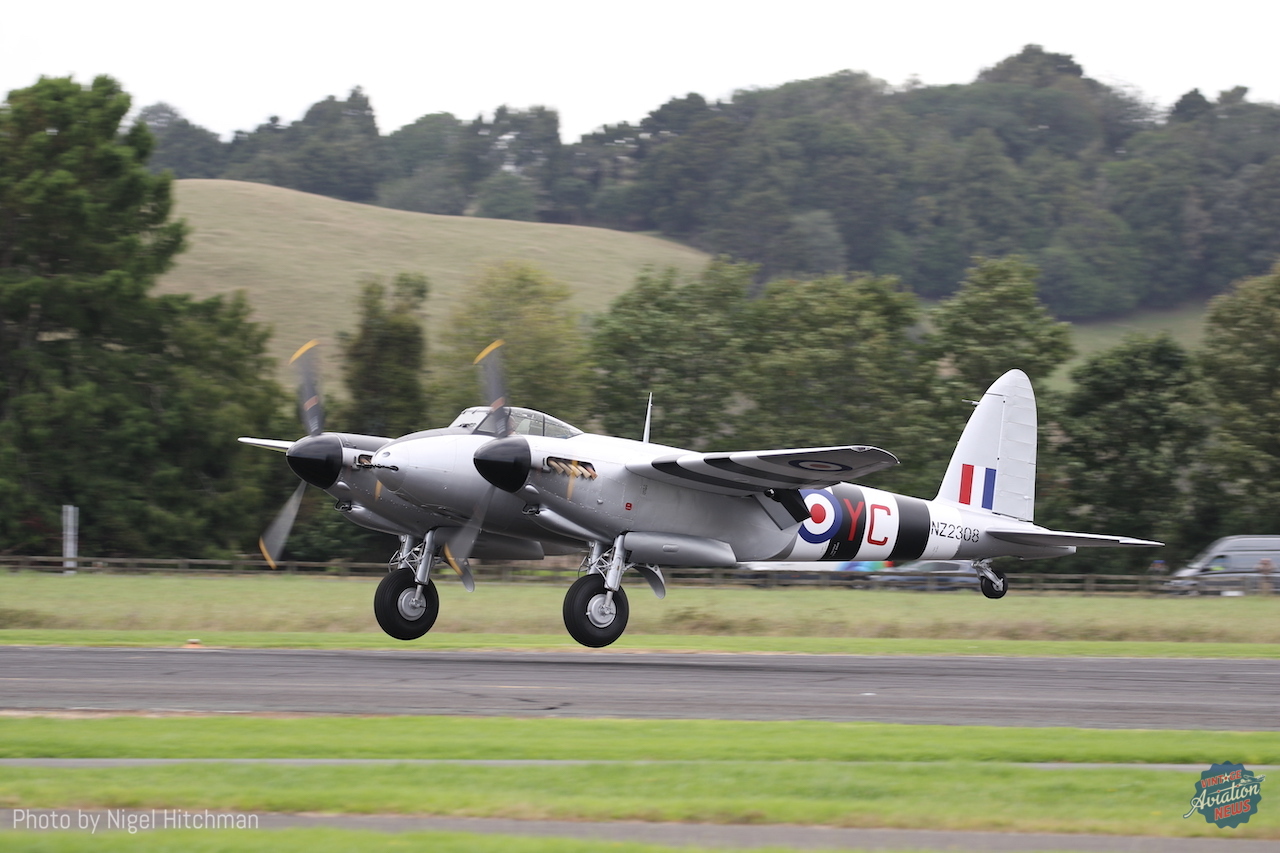

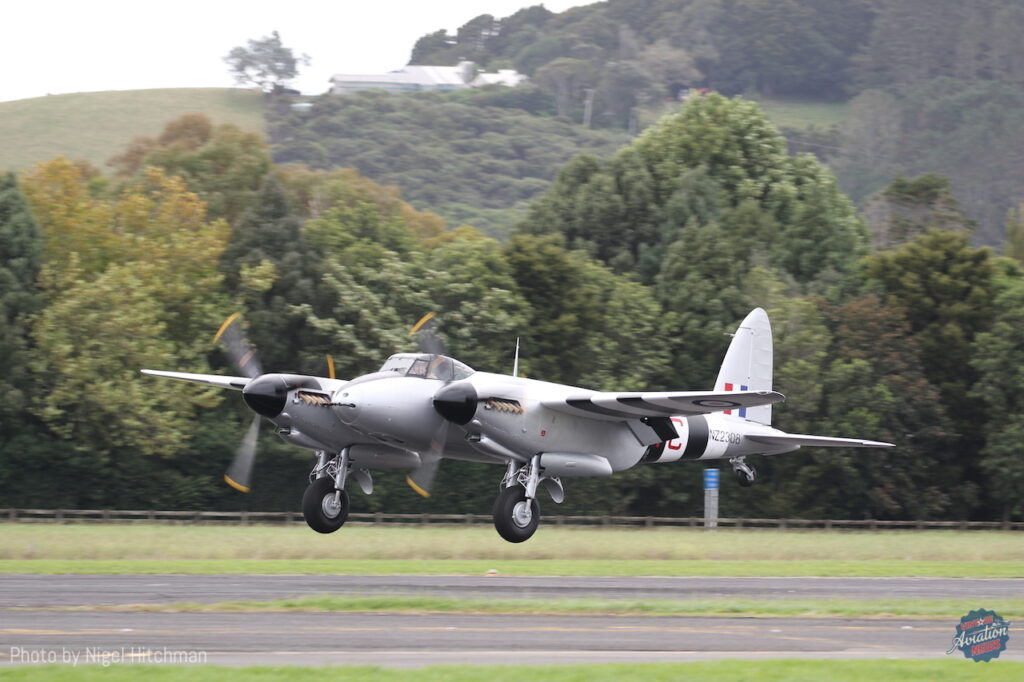
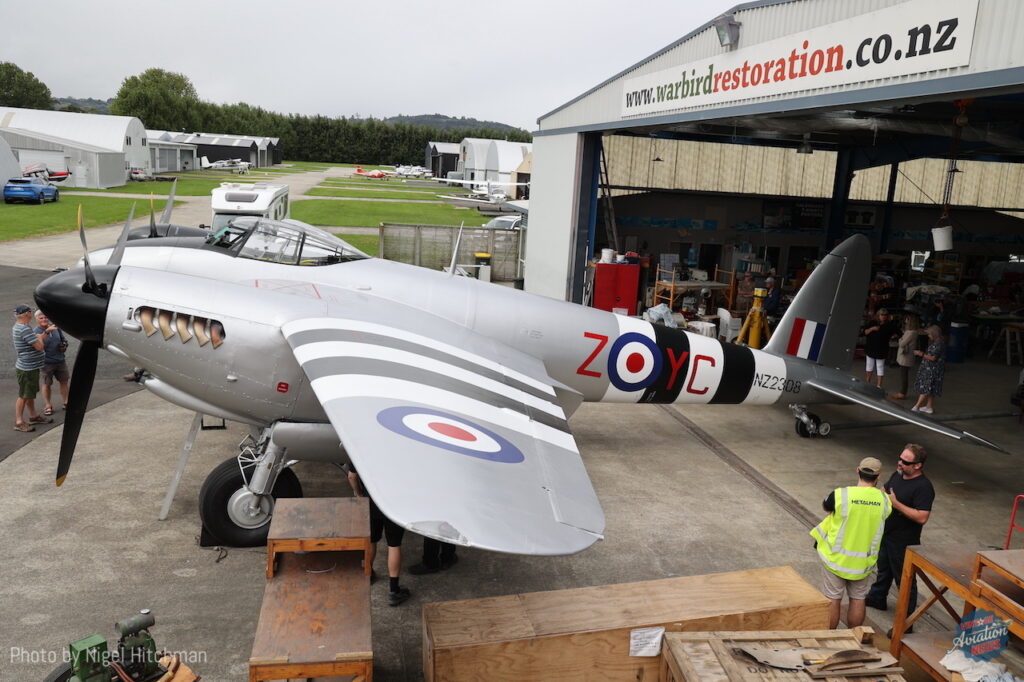
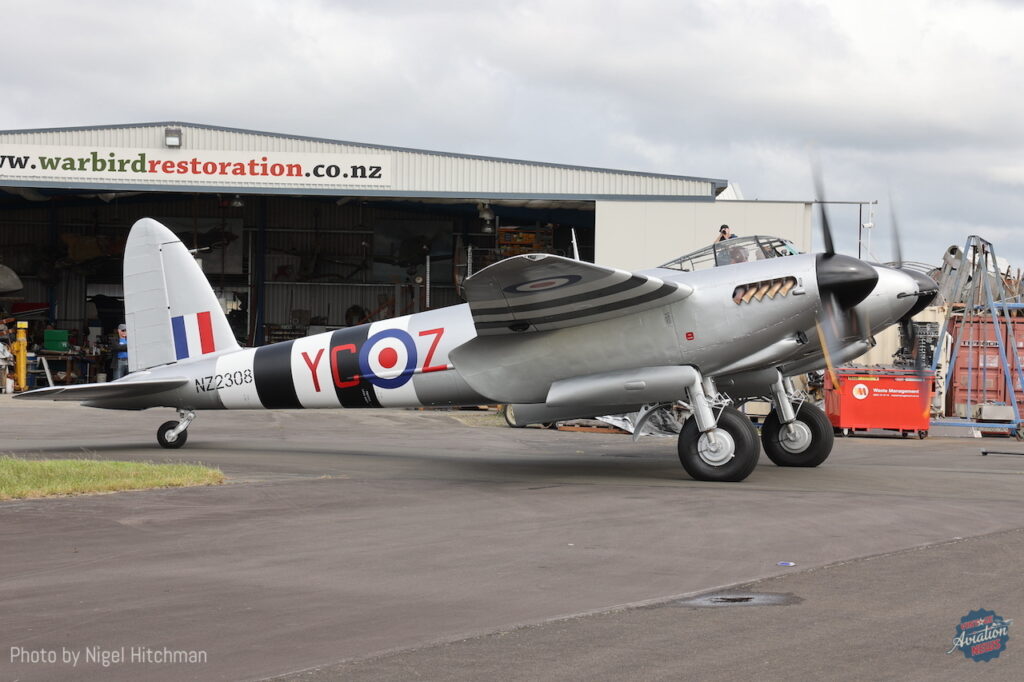
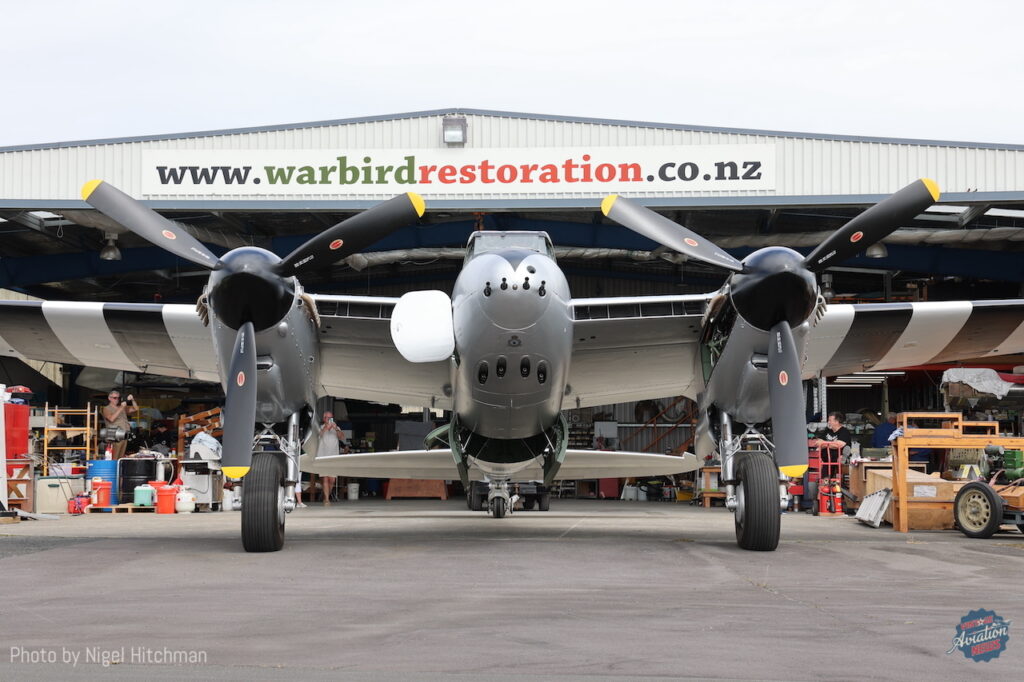
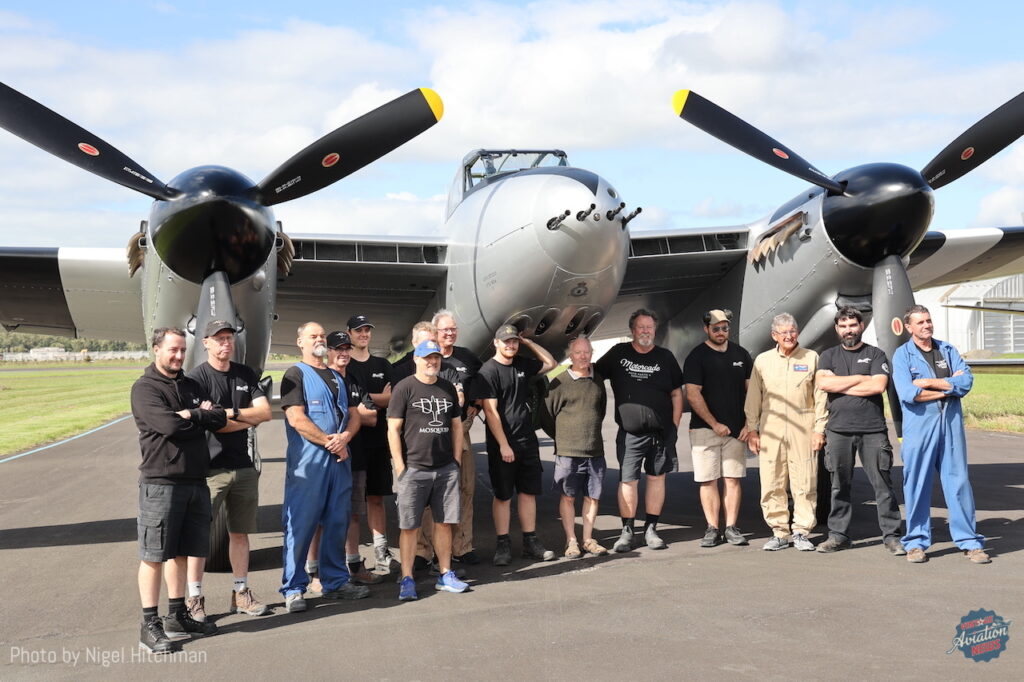
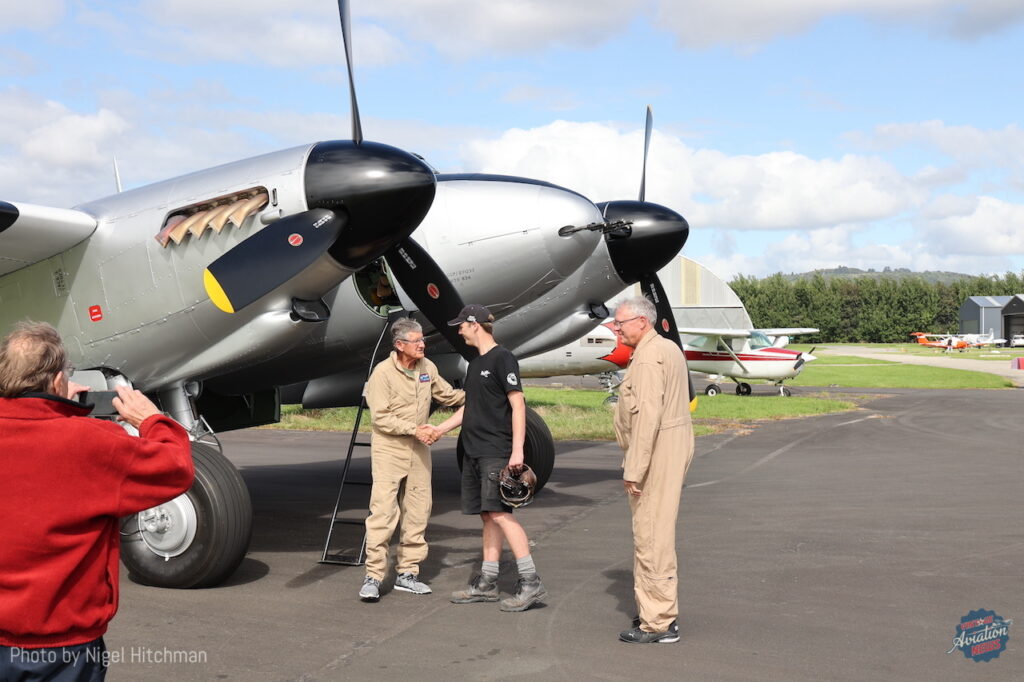
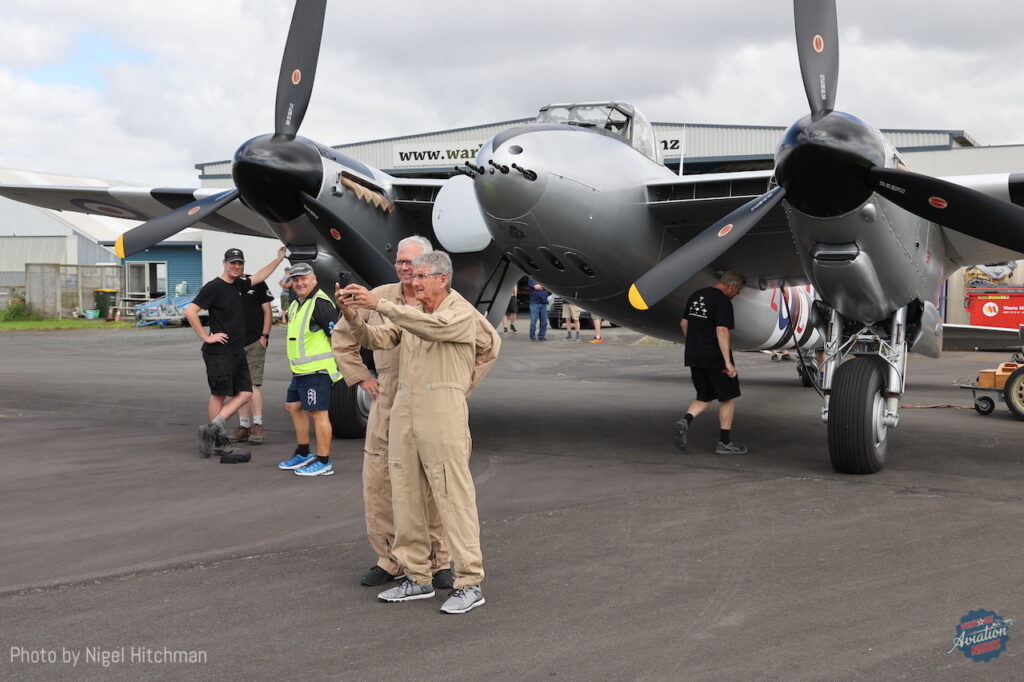
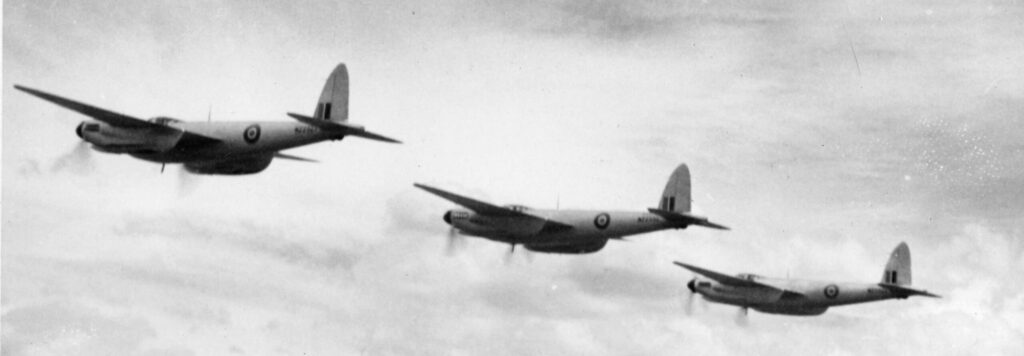
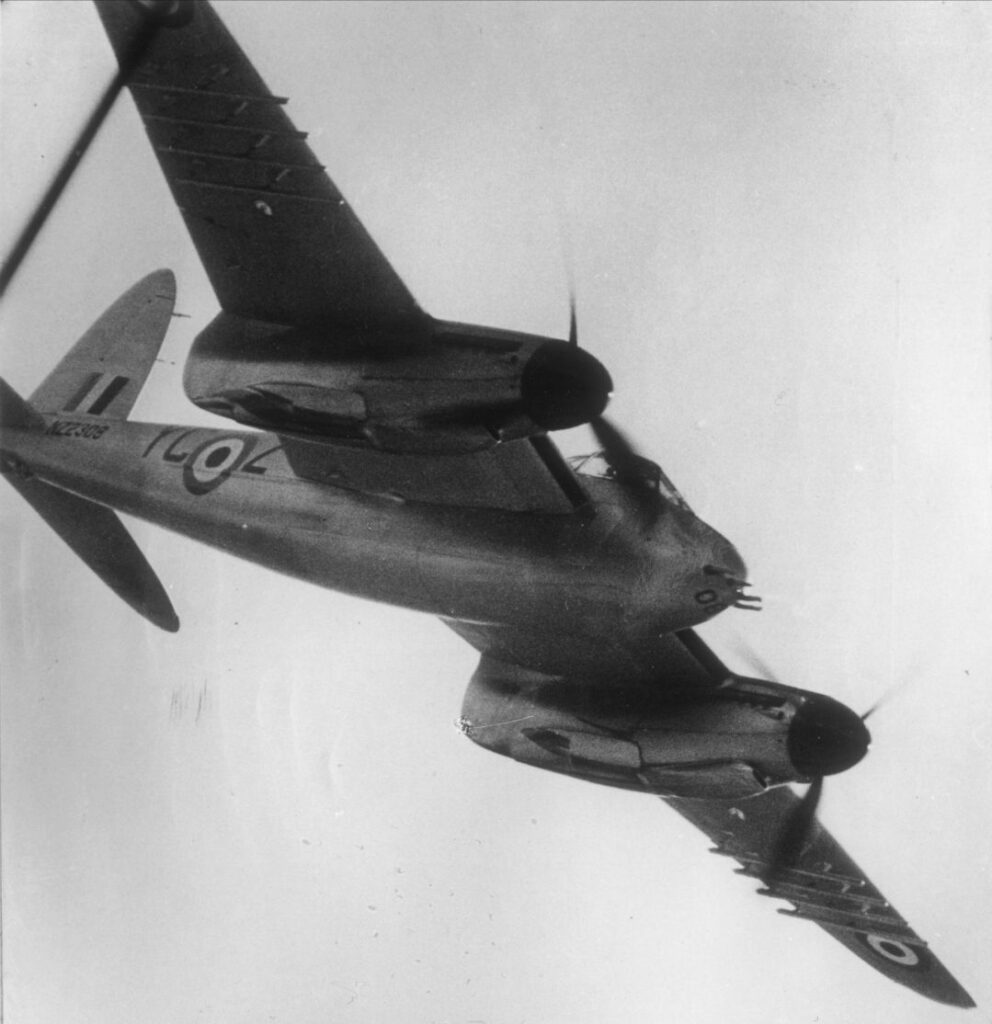
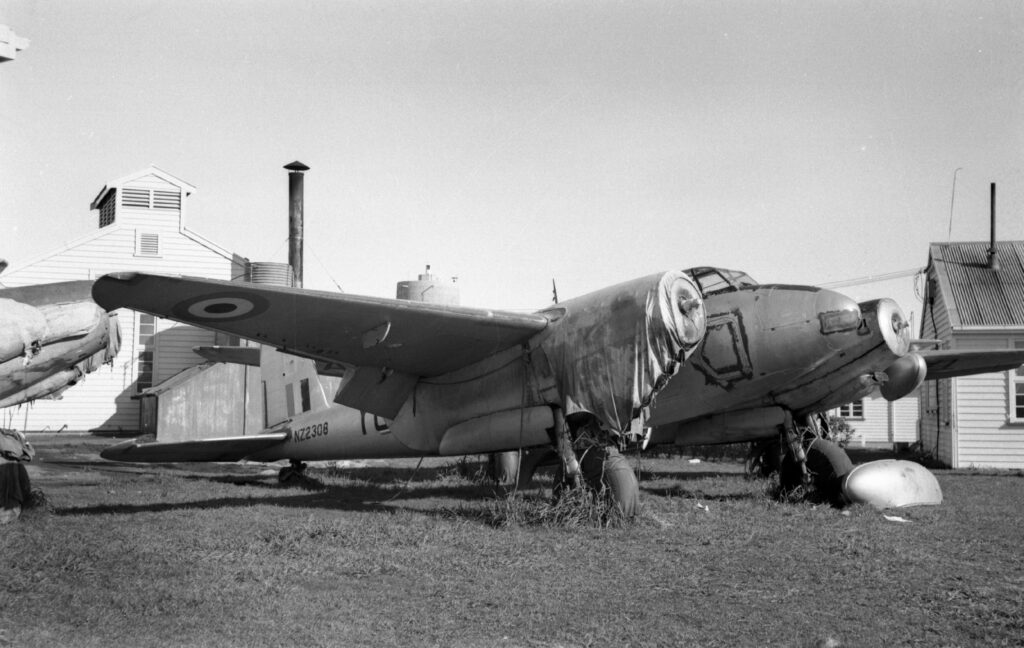
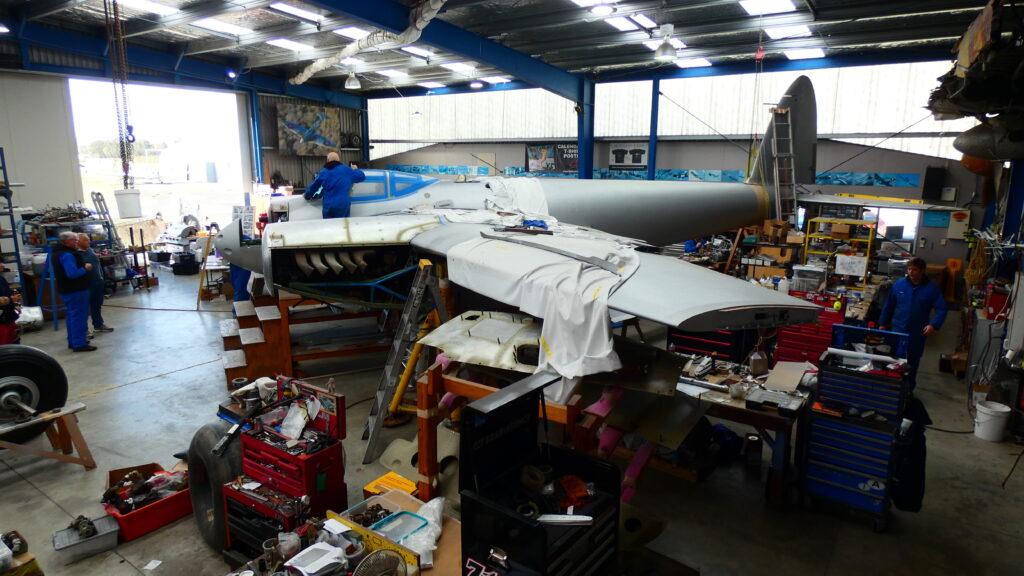
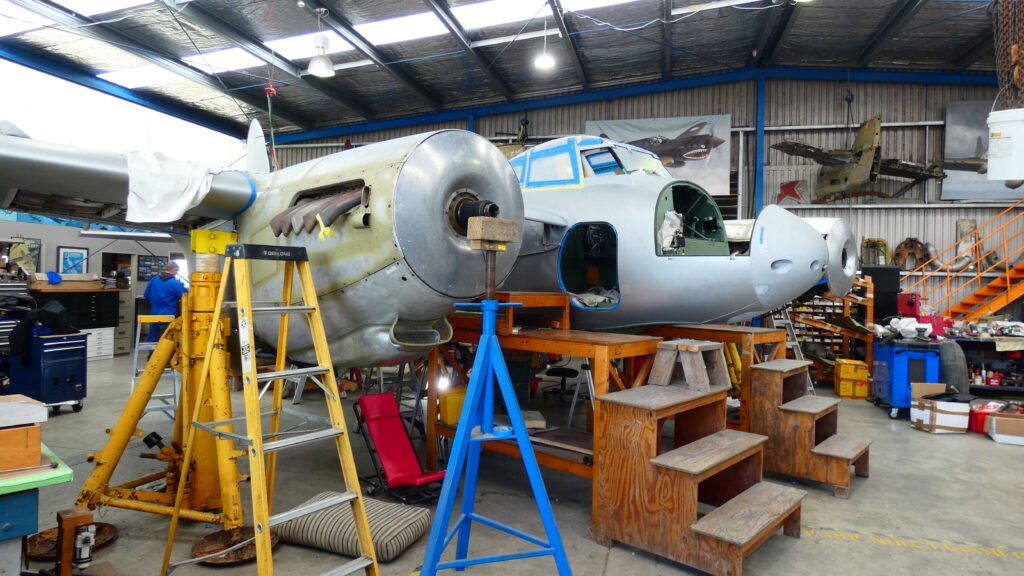
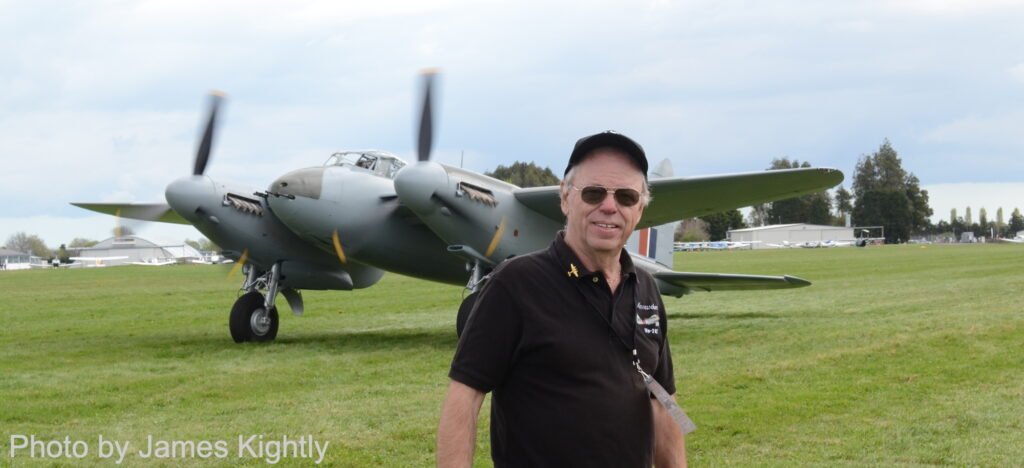
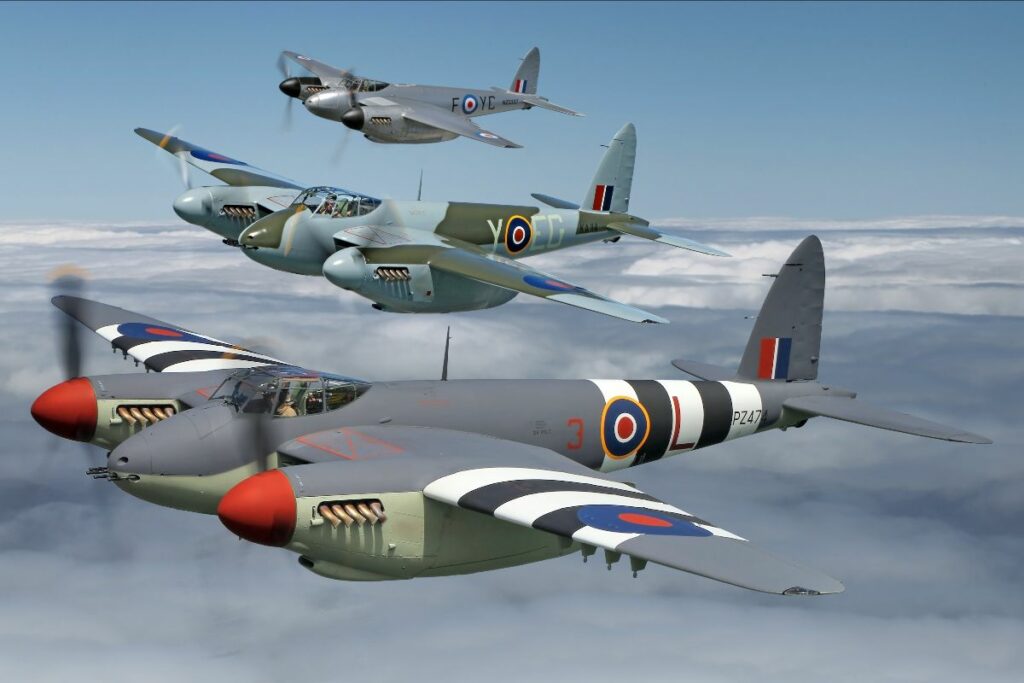
![Just Over Two Weeks to Go Until Warbirds Over Wanaka 2024 10 Another crowd favourite, the Grumman TBM-3E Avenger "Plonky", getting near the end of some major engineering work in time for Wanaka. [Photo via Warbirds Over Wanaka]](https://vintageaviationnews.com/wp-content/uploads/20240307-Avenger-via-Warbirds-Over-Wanaka-150x150.jpg)
![Ex-RNZAF de Havilland Mosquito NZ2308 First Engine Runs in New Zealand 11 DH Mosquito T.43 NZ2308/ZK-PWL about to start its two Rolls-Royce Merlins for the first time in nearly 70 years. [Screenshot from Avspecs Ltd video on Facebook]](https://vintageaviationnews.com/wp-content/uploads/Ex-RNZAF-de-Havilland-DH98-Mosquito-NZ2308-Firs-Engine-Runs-in-New-Zealand-150x150.png)
